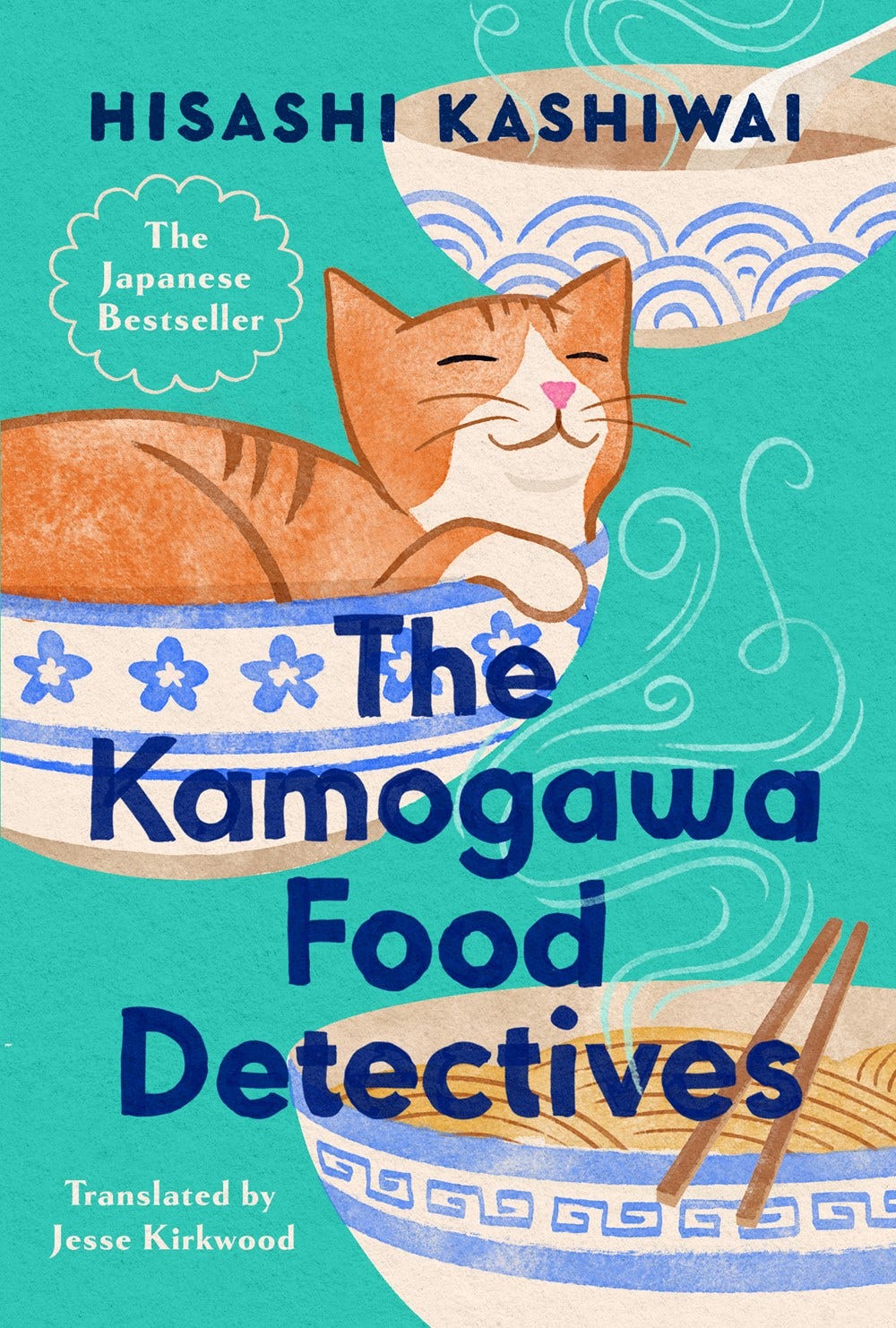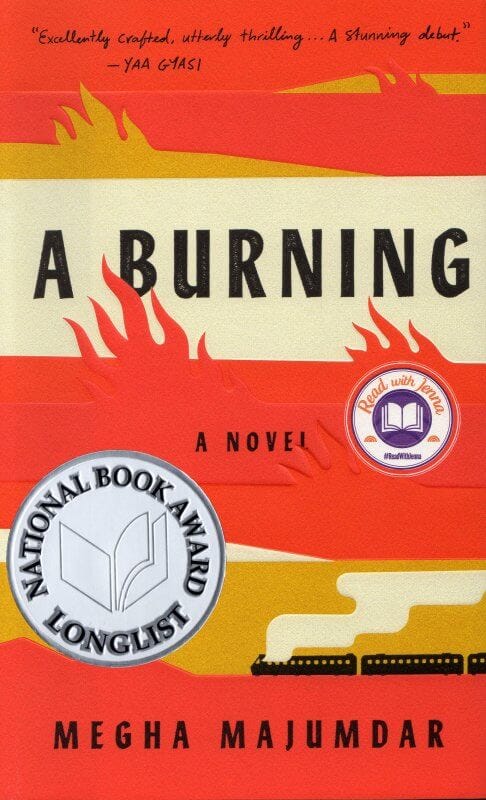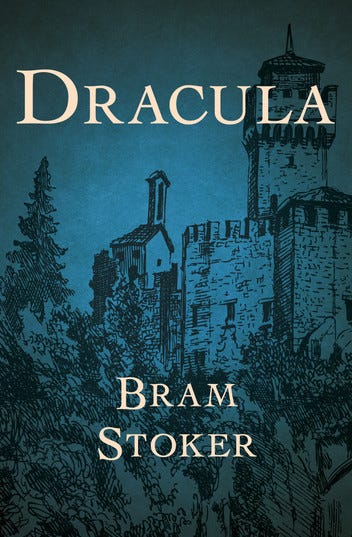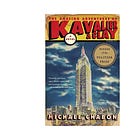Two of my greatest pleasures in life are books and food. And so, it makes me really happy when a book talks about food a lot!
My greatest fear in a dystopian world is when we eat capsules or tablets for sustenance instead of actual food. Sure, scientists will be able to mimic flavor. But how about the warmth you feel in your stomach after sipping a good soup? Or the explosion of custard when biting into a pastry? Or the combination of flavors and textures of a meticulously prepared dish? Can it mimic the satisfaction you get when sipping a milkshake all the way to the bottom without stopping? And will meals eventually be like popping something on the go instead of family and friends sitting down and catching up? That is a future I do not want.
I’ve had this draft sitting for a while now but
’ post about Feast on Books made me finally finish this list. Here are books about food featuring Filipino, Japanese, Indian, Korean, Italian, and Mexican cuisines.Smaller and Smaller Circles by F.H. Batacan
This book is a crime novel set in the Philippines. It is also part socio-political commentary on the injustices faced by the poor and minority here in the Philippines and how incompetent our justice and law enforcement agencies are. It shows us the systematic corruption of the Philippine government, the church, and the rich. And how the minority are just pawns in their game.
On the bright side though, this book talks about one of my favorite Filipino customs, the meryenda time. Meryenda means both the food and the time of day when Filipinos eat a light meal in between major meals. Filipinos love meryenda and we have so many kinds of food for it. In fact, some establishments serve meryenda buffets with meryenda food only. Filipino meryenda consists of pandesal (bread), kakanin (an umbrella terms for sweet cakes made of rice or cassava), banana cue (deep fried banana with caramelized sugar, a personal favorite), pansit (an umbrella term for stir-fried noodle dishes), siopao (pork bun), and many, many more.
Meryenda time is a ritual, the unofficial fourth meal, it's as big as a three big meals. It's more than snack time. It's a mindful pause on a busy day. As with all meals, it's a centerpiece for human connection.
In the book, when the setting is late afternoon, there's almost always a meryenda scene and the author takes her time to write how the meryenda came to be. She describes how and where we get our meryenda which can sometimes be a street food or leftovers from meals from the day before. Also in the book, every house visit starts with "Tara, Kape" (Come, let's have coffee) and I can just imagine the homely ritual of serving coffee and biscuits or bread when somebody visits your house. I love it. If somebody asks for a contemporary Filipino book, I always recommend this. You can learn a lot from this book.
The Kamogawa Food Detectives by Hisashi Kashiwai and translated by Jesse Kirkwood
As I am writing this post, it's just a week since my husband and I got back from Japan and I am still day dreaming from our daily food trips there. It was bliss.
The Kamogawa Food Detectives is a culinary mystery novel. Bet you've never heard that before huh. Father and daughter duo Nagare and Koishi run the Kamagowa Food Detective Agency where they can recreate any food you dream of eating again. Nagare does actual detective work in the book which is my favorite part. A lengthier review can be found here but what I wanted to talk about more food.
The book showcases Japan’s varied food culture. Nagare recreates regional dishes tied to a prefecture’s heritage and season and sources local ingredients to a T. Each chapter is filled with mouthwatering descriptions of food and flavor. When a first time visitor dines at the Kamagowa Diner, they are served with a feast and Nagare describes every single one of them. It reminded me of what my husband said after eating an ekiben (Japanese bento box sold at train stations). He said that he loved how can get so many different textures and flavors of food in just one sitting. That was what I felt when I read this book.
It's a short book and the plot is really simple but it made me appreciate food even more. As I mentioned in my books that made me post, food is more than just food but a centerpiece for human connection and an anchor to tradition.
Side Note: Murakami's Norweigan Wood and The Wind Up Bird Chronicles talks a lot about the ritual of making food - the going to market, the washing of vegetables, the chopping of ingredients. All of the mundane things when we cook. His writing is calming and meditative. I love it.
A Burning by Megha Majumdar
This book is a story about "trial by media" and of the moral decisions we have to make to rise above our station. Other than that, reading this book made me crave for Indian food. In every scene, there’s always a housewife cooking dal, or a street vendor barking out today’s goods, or some event giving out chicken biryani. Wafts of Indian spices, onion, and fresh vegetables fill my head as I read page after page. Majumdar paints a vivid picture of food and domestic life in India against a backdrop of systemic corruption.
So We Meet Again by Suzanne Park
This is a Korean rom-com book that also talks about the Korean-American experience and female empowerment but what I liked about most about it is the talk of Korean food. Investment banker Jesse Kim gets laid off from her prestigious banking job and moves back to her parent's house in Tennessee. Back at home, she relaunches her old Korean cooking channel on Youtube as a marketing strategy for releasing her line of Korean sauces. Throughout the book Jesse describes how to cook a couple of Korean food which was so mouthwatering I kept craving for Korean food. I was familiar of most of the food featured here so every time a certain food is mentioned, I would imagine myself eating it. Another thing I loved about this book is the wholesome mother-daughter live cooking scenes.
I think it's no surprise that all the food mentioned up to this point are Asian cuisine. I am Asian and all of the cuisine above are my comfort food. All of them are very accessible in my city. Not just restaurants but also specific ingredients.
Like Water for Chocolate by Laura Esquivel and translated by Carol and Thomas Christensen
The novel centers on Tita and her forbidden romance with Pedro. Throughout the novel, we read about Mexican food and culture which are both driving forces behind the story. The book uses food to express magical realism which made it a real delight to read.
Tita is the main cook of the family and prepares most of the meals, whether it's for daily meals or a feast for a celebration. She uses food to express her emotions (often repressed ones) which serves as a medium and transmits a weird reaction to people who eat her cooking. Each chapter of the book starts with a dish. The next page lists the ingredients and the chapter begins with how to prepare the said dish. The rest of the dish's preparation is weaved into the story's narration. I thought it was brilliant. I am not familiar with any of the food mentioned in the book but they seem to be sumptuous.
One Italian Summer by Rebecca Sterle
Katy and her mother was supposed to go on a two-week trip to Positano where her mother spent the best years of her life. But then her mother died and Katy is left devastated. Now Katy is faced with embarking on the adventure alone.
To be honest I didn't like this book that much. BUT. It completely transported me to Positano basking under the Mediterranean sun and eating to my heart's content. The idyllic Italian summer is vividly portrayed in this book and every food description fully engaged my taste buds. Now thinking about this book made me want to lounge around the beach while munching on something tomato-y or lemon-y while sipping ice cold wine.
Dracula by Bram Stoker
I think I should mention that Dracula, which is surprising to me, talks about food a lot. Maybe Bram Stoker was a foodie? Jonathan, the book's protagonist, writes about every food he ate during his travels on the way to the Count's castle in his journal. It's been a long time since I read Dracula and don't remember much about the food anymore. But I do remember that they weren't appetizing when I read them.
Other foodie books on my list
I have so many other food novels in my radar that I haven't read yet. I keep a little list you see. Here they are:
Piglet by Lottie Hazell
Lessons in Chemistry by Bonnie Garmus
Kitchen by Banana Yashimoto
Butter by Asako Yuzuki
Arsenic and Adobo by Mia P. Manansala
Heartburn by Nora Ephron
Milk Fed by Melissa Broder
Have you read any of the books in this list? Which one and what did you think about?
In case you missed this..
Everything in this newsletter is free for now. And so, every open, like, comment, or restack means a lot to me and I thank you all for your support. If you’d like to further support me, buy me a coffee so that I can continue this work.
Note: The cover picture for this newsletter was generated through ChatGPT














Manansala’s Tita Rosie mystery series depicts all kinds of Filipino food and includes recipes!
Oooh this is a great list Jam! I somehow haven't read any of these, and would love to read Smaller and Smaller Circles especially. I read Piglet recently and loved it—will publish my review in a few weeks.